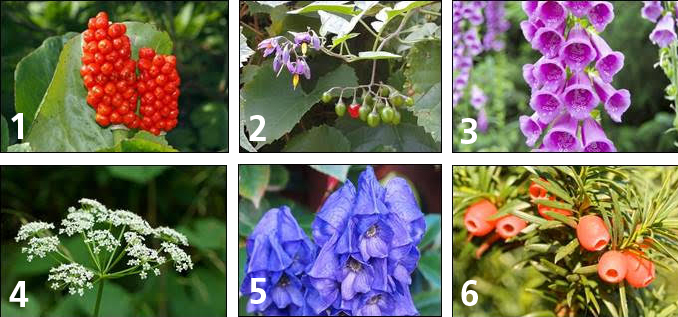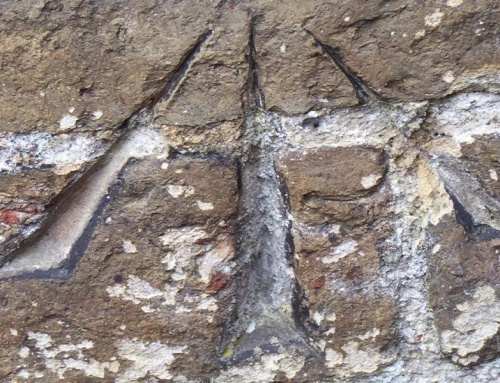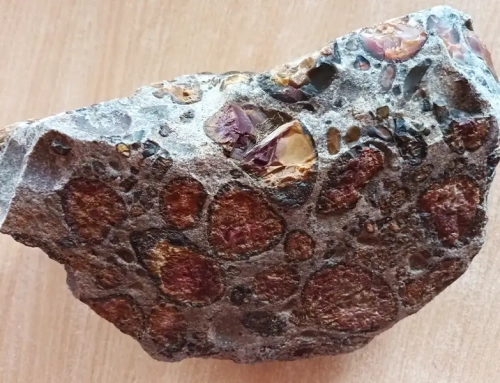It’s surprising what you might find in your garden! Here are a few of the fairly common poisonous plants you should know about – especially if your children play outdoors!
Many of the most toxic garden plants are most easily identified by their flowers – but obviously that it isn’t possible all year round. Other plants have the worst of their poison within the roots, buds, berries or leaves. Here are a few of the worst – and most common – culprits a householder may encounter.
1. Lords and Ladies (Arum Maculatum) also known as Cuckoo Pint, Tender Ear, Wake Robin, or Jack in the Pulpit.
Usually found in hedgerows and woodland, it has green, poker-shaped leaves and a top spiked cluster of very bright red or orange berries. It has an acid taste, may sting if touched, can reduce the ability to breathe and is the most frequent accidental plant poisoner seen in hospital A&E departments!
2. Deadly Nightshade (Atropa Belladonna) a plant which Venetian women used to dilate the pupils of their eyes in order to make themselves more alluring. The poison particularly affects the stomach as well as the heart’s nerve endings. It is known for inducing hallucinations and convulsions. It affects vision and it is said that a few berries can kill a child. No wonder it is known in folklore as the property of the Devil!
3. Foxglove (Digitalis). Made more dangerous by virtue of being a very common garden plant, it can grow to about 6 foot tall and has flowers which run from lavender through to yellow, pink and red, but is most often associated with purple. Also called fairy fingers, Lion’s mouth, ladies glove and dead man’s bells, Foxglove can cause skin irritation through direct contact and all parts of the plant are poisonous, particularly the roots. If ingested, it can cause nausea and dizziness. The poison also affects the heart and in large amounts can be fatal, but poisonings are rare as it has such an unpleasant flavour.
4. Hemlock (Conium Maculatum) also known as gypsy flower, Honiton lace , Devil’s bread and poison parsley amongst other names. A tall, green plant with purple spots on the hollow stem and white flowers. It grows to around 5 or 8 feet tall and is mostly found along river banks and ditches and on hot days gives off a mousey smell. It numbs the extremities and can paralyse the lungs. It was the poison used to kill Socrates and is easily confused with wild carrot, fennel or parsley. It is also poisonous to farm and domestic animals.
5. Wolfsbane (Aconitum) aka monkshood, aconite, the Queen of Poisons and the devil’s hound. This is generally a purple-hooded flower (but also found as blue or yellow) that is quite content to grow in English gardens under the shade of a tree. It is reputed to have caused death even by being brushed against and is held to slow the heartbeat. Initial symptoms are gastrointestinal, including nausea, vomiting, and diarrhoea. This is followed by a sensation of burning, tingling, and numbness in the mouth and face, and of burning in the abdomen. The Greek name lycotonum, which translates literally as “wolf’s bane”, is thought to indicate the use of its juice to poison arrows or baits used for killing wolves in ancient times.
6. English Yew (Taxus baccata). This evergreen tree is widely associated with churchyards and many believe this is from earlier pagan associations. Certainly it has longevity, often lasting for 600 years or more. It grows to about 70 feet tall and has bright red berries, the flesh of which is the only part of the tree that is not poisonous (the seeds, however, are!). The foliage remains highly toxic and increases in potency as the leaves dry out. Symptoms of yew poisoning include an accelerated heart rate, muscle tremors, convulsions, collapse, difficulty breathing, circulation impairment and eventually cardiac arrest. However, there may be no symptoms, and if poisoning remains undetected death may occur within hours. Fatal poisoning in humans is actually very rare but livestock can be badly affected after eating the foliage.
Dealing with accidental poisoning
If you think a child (or anyone for that matter) has eaten part of a suspect plant, seek medical advice immediately from a hospital A&E department.
Try and take a sample of the plant with you (as many parts as you can for accurate identification e.g. leaves, flowers, fruits, stem).
Do not panic and do not attempt to make the person sick.
In the case of animals, seek immediate veterinary help and take along samples of the plant if possible.






